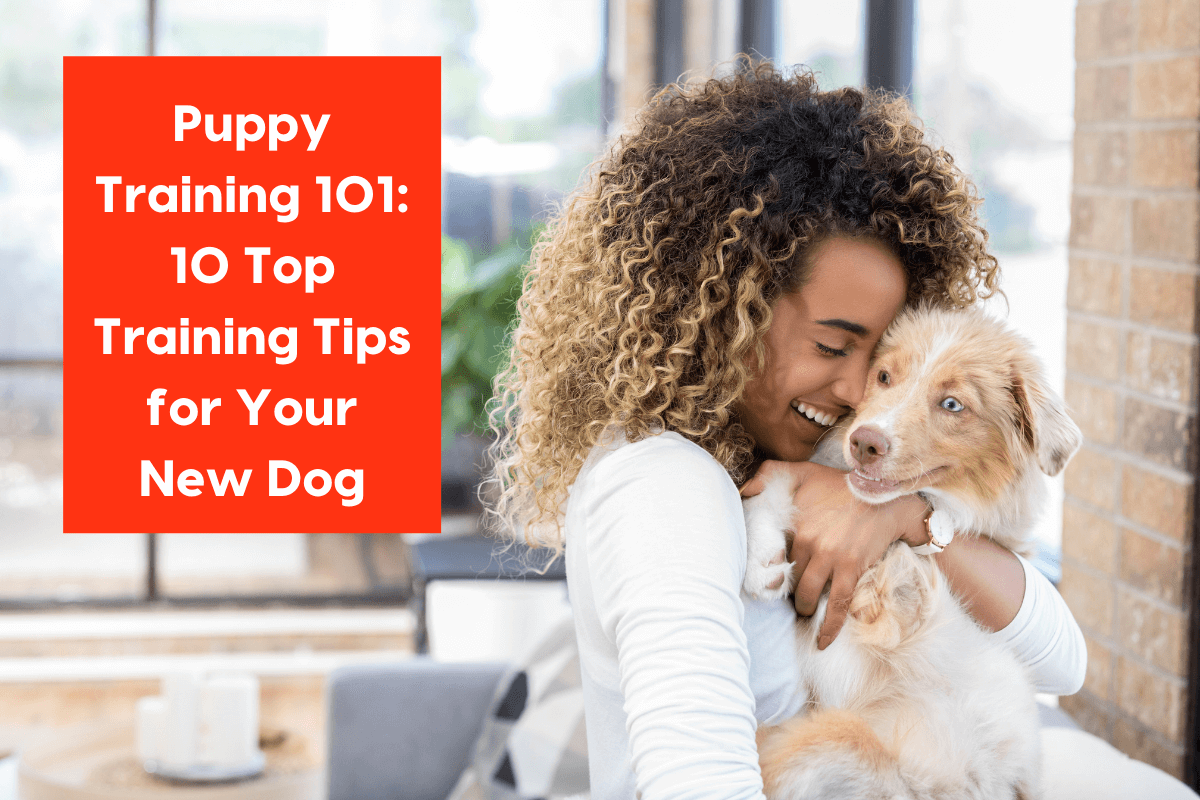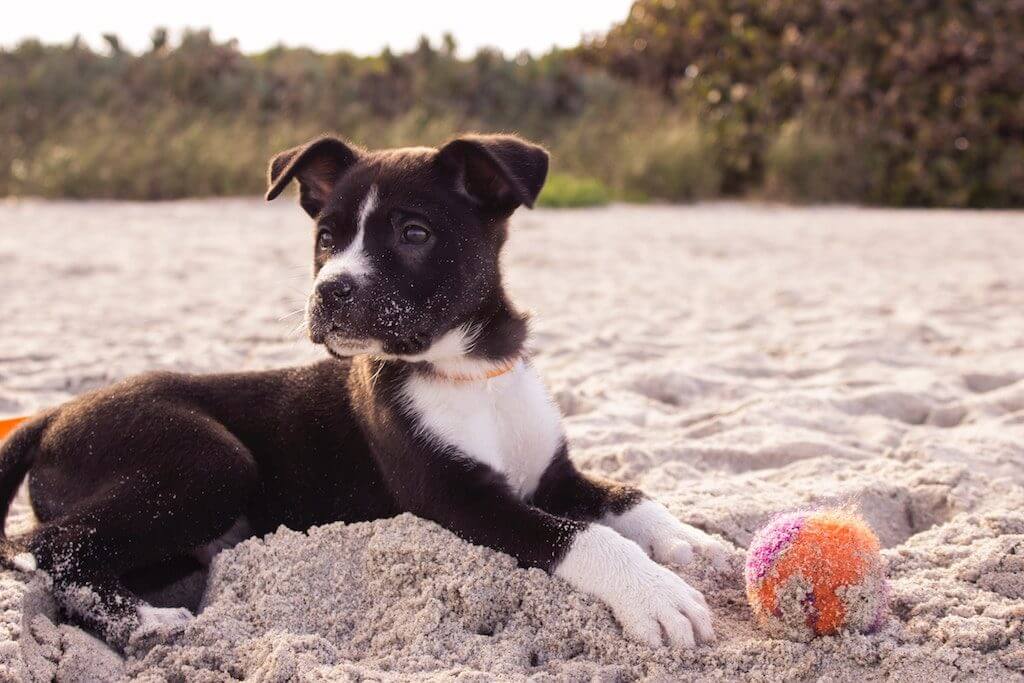Training a Puppy 101: 10 Best Puppy Training Tips & Advice | Pupford

Bringing home a new dog is undoubtedly exciting, but it can be a little overwhelming too. There’s a lot of “what now?” and “where do we start?” types of questions when it comes to training.
We put together this list of 10 puppy training tips to help answer those questions and give you as many tips for training your new puppy as possible. We’ll cover as many topics as possible – but of course, if there’s anything else you want to know, feel free to ask in the comments!
Now let’s get into those tips and advice for training a puppy!
Related Reading: 31 Vital Things to Know Before Getting a Dog
10 BEST PUPPY TRAINING TIPS

Genuinely we could write 100's of articles about puppy training tips... Which we've actually done! So, be sure to browse our full blog for a whole host of puppy resources.
To make it all even easier to understand and consume, we've created the 30 Day Perfect Pup Course, taught by Zak George. It's available on our website and on our app. Sign up for free here!
But, outside of all that, let's dive into the tips. Here are 10 of the best puppy training tips:
- Properly prepare your home
- Create a schedule for potty training
- Introduce crate training early
- Get the basics down first
- Socialize your puppy properly
- Have the right tools
- Don't rely on the word "no"
- Learn dog body language
- Nip puppy biting
- Have resources at your fingertips
Let's look at all those training a puppy 101 tips below. 👇
🐶 Don't miss out! Sign up for the 100% free online video course 30 Day Perfect Pup today. Sign up here!
1. MAKE SURE YOUR HOUSE IS PROPERLY PREPPED FOR A NEW PUPPY
If you haven’t done it ahead of time, it’s super important to make sure you take the time and properly prepare your home and yard for your new puppy. This is often called puppy-proofing!
At a glance, this looks like:
- Making sure your home is free of dangerous items and plants within a puppy’s reach
- Checking that your yard has a fully enclosed space and is free of hazards that your puppy can get to
- Preparing your new dog’s area
- Having food, bowls, and feeding areas ready
- Making an appointment with your veterinarian for a health check
- Making sure you have all the essential tools for success (more on that later)
For a more detailed overview of how to prepare your home for a new dog, check out our free New Dog Starter Course.
2. CREATE A SCHEDULE ASAP - AND STICK TO IT FOR THE BEST POTTY TRAINING RESULTS
Having a puppy potty training schedule is a crucial part of successfully training your new dog. Sticking to the same wakeup, feeding, potty, and play times will get your dog comfortable and confident in their routine.
The consistency of a routine will also make potty training easier, which every new dog parent can appreciate. Potty training, also known as house training, may be the most frustrating part of puppy training, but it’s also one of the most important.
We have a dedicated course with videos, PDFs, cheat sheets, and checklists to help you learn the most effective way to potty train your dog. Led by Traci Madson CPDT-KA & CBCC-KA, the course examines why dogs have potty issues, how to handle it, and how to get your dog to go potty where you want them to.
Take me to the Potty Training Course!
Related Reading: How Long Does it Take to Train a Puppy?
3. INTRODUCE CRATE TRAINING EARLY
The crate has a wrongful reputation for being a place of punishment. But if you introduce the crate early and use positive reinforcement, it can serve as a place of comfort and relaxation for your dog.
Over time, proper crate training can lead to decreased separation anxiety and destructive and unwanted behavior, and increase your dog’s ability to self-regulate. However, and we cannot stress this enough, these benefits come from proper crate training, not using the crate as punishment, or leaving them in the crate for extended periods of time.
So how do you successfully crate train? Take a look at our guide Everything You Need to Know About Crate Training Your Dog.
4. GET THE BASICS DOWN BEFORE MOVING ON
One common dog training mistake is trying to tackle too much too quickly. Sure, it’s a lot of fun to see your dog doing tricks and learning advanced behaviors like dog potty bell training, but those rely on the basics for success.
Take your time training your dog, and be consistent with the basics. This builds confidence, strengthens the relationship between you and your dog, and lays the foundation for those more advanced (and let’s be honest, show-off worthy) behaviors.
Our article Consistency in Dog Training dives into detail about the importance of consistency and how to get reliable responses to basic behaviors.
Related Reading: How Much Time Should I Spend With My Puppy?
5. SOCIALIZE YOUR PUPPY PROPERLY
While socialization does help dogs be more comfortable around other dogs and people, it goes far beyond that. It helps them learn new places, sights, sounds, etc. and build the confidence to navigate new environments without being afraid.
The most important window for puppy socialization is about 16-24 weeks old, so socialize early. Not sure how to socialize your new dog safely and effectively? Our video with CPDT-KA Trevor Smith gives a great overview on How to Socialize Your Dog.
6. HAVE THE RIGHT TOOLS
You wouldn’t raise a human baby without diapers or a car seat, so why would you raise a puppy without the right tools?
For proper training, you need at least:
- A properly sized crate
- Chew toy and enrichment toys
- High value, low calorie training treats
- Short and long leads
- Cleaners for accidents (they WILL happen!)
- Engagement and enrichment toys
To help you get started with the basics, we put together a New Pup Pack that has a lot of the training basics, plus a few extras like poop bags and a collapsible water bowl.
🐶 Don't miss out! Sign up for the 100% free online video course 30 Day Perfect Pup today. Sign up here!
7. DON’T RELY ON THE WORD “NO”
Let’s be real - young puppies will do things we don’t want them to do. The word “no!” is bound to slip out of your mouth at some point. But instead of focusing on the bad, it's important to hone in on good behavior.
While it certainly has its time and place, saying “no” is not an effective training method because it doesn’t really hold meaning as a behavior. Dogs respond better when we teach them what to do rather than just “don’t do that.” Plus, it helps you avoid bad habits!
So how can you stop relying on “no” and what should you do instead? We have an entire podcast episode on that exact topic. You can listen to the recording, watch the video, or read the overview of not relying on no here.
Related Reading: How to Talk to Your Dog + 3 Reasons You Should
8. LEARN DOG BODY LANGUAGE
While our dogs can’t speak our language, they are constantly communicating with us. They just do it through expressions, posture, and certain body parts.
Learning your dog’s body language helps you understand their needs and communicate with them – which makes you a better dog parent. You’ll be able to pick up on when your dog is scared, uncomfortable, anxious, or about to react, which also helps keep them safe.
Learn all about your dog’s body language and what they may be trying to tell you in the article Basics of Dog Body Language.
Related Reading: How Much Exercise Should a Puppy Get?
9. NIP PUPPY BITING
While puppy biting can be challenging and frustrating (and not to mention painful!), it’s a normal part of your dog’s development. What’s important is understanding how to handle puppy biting, what not to do, bite inhibition, and techniques for channeling the biting instinct productively.
We have a podcast episode that breaks down puppy biting and answers three main questions:
- What should your expectations be for puppy biting?
- Things you should NOT do when your puppy bites
- Three effective methods to help stop puppy biting
Related Reading: What Not To Do With a Puppy
10. HAVE RESOURCES AT YOUR FINGERTIPS
The most important thing to remember about puppy training is that you’re never in it alone. We’ve built a community led by industry experts to help give pup parents like you access to all the resources they could possibly need to raise a happy and healthy pup.
For example, we’ve partnered with YouTube’s #1 dog trainer Zak George to provide even more dog training tips in 30 Day Perfect Pup.
We also have an entire online library of dog training courses in the Pupford Academy, covering everything from crate training to separation anxiety, to impulse control, to barking solutions – and so much more. It’s also available as an app, so you can have the best dog training resources (literally) at your fingertips, available any time.
And it's also important to note, getting the help of professional dog trainers is recommended! They can help with important behaviors like leash walking, clicker training, and more.
Related Reading: Top 10 Things to Train a Puppy
BEST PUPPY TRAINING TIPS RECAP

As you can see, there’s a lot involved in training a new puppy. But that just means more and more opportunities to bond with your new dog and get off to a great start.
Also, know that you don’t have to go it alone. You have the Pupford family at your side every step of your dog training journey. Whether you use the Pupford Academy, our Facebook community, our blogs, our videos or other resources, we’re here for you!
If you're ready to start puppy training off on the right paw, sign up for 30 Day Perfect Pup today! It's 100% free and uses positive reinforcement. Get started here!
If you have any other dog training questions before your next training session, please ask them in the comments below!
🐶 Don't miss out! Sign up for the 100% free online video course 30 Day Perfect Pup today. Sign up here!
0 Comments